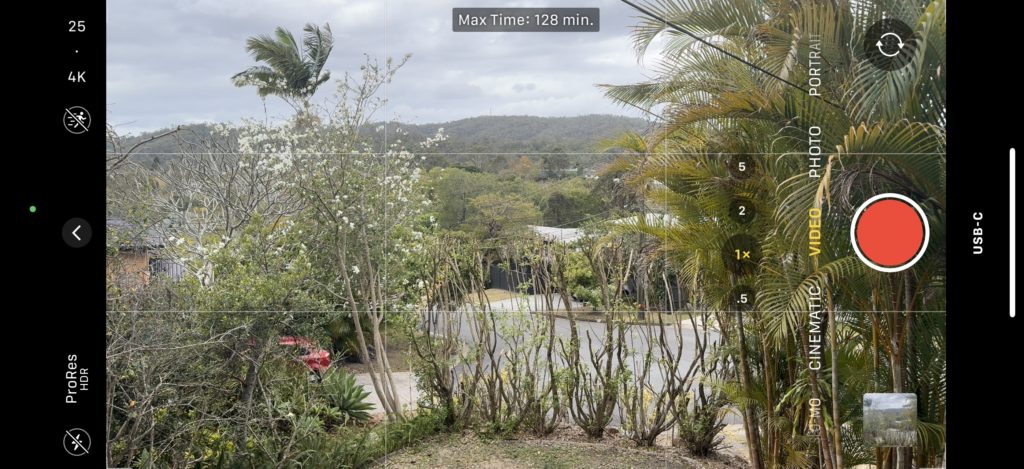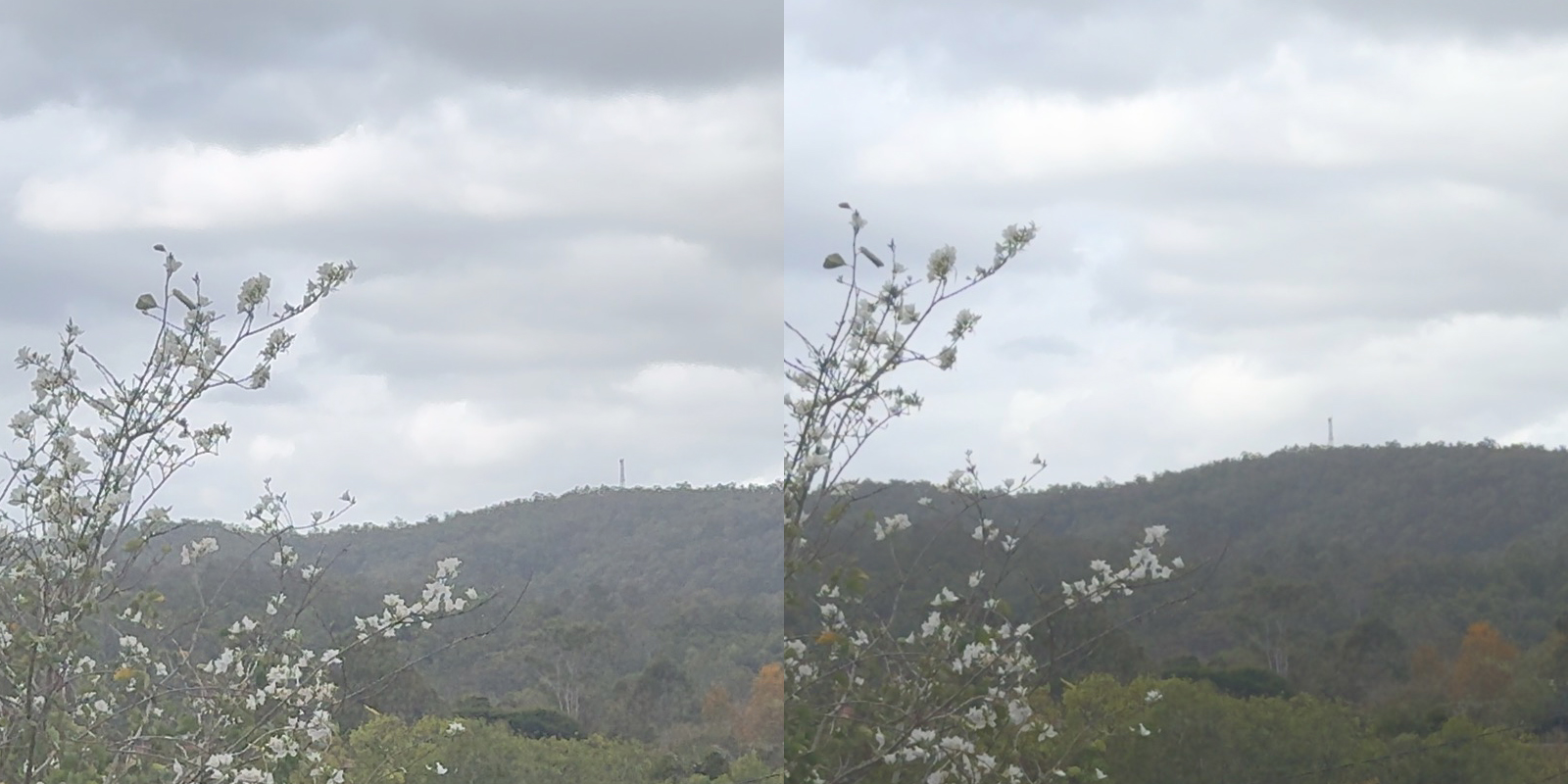The iPhone 15 Pro and Pro Max came out just a few hours ago here in Australia, and I thought I’d jump in quickly to see what’s improved with regard to video. The new Pro models add ProRes HQ direct-to-SSD capture, in Apple Log, up to 60fps. But HDR and Log should be able to capture about the same amount of color information, right — so what’s fundamentally changed? Turns out, quite a bit.

You could shoot ProRes on the iPhone 14 Pro, but only internally, and only in the HDR color space. Leaving image quality for the moment, only being able to record internally was a huge problem. With about 20GB free on a 256GB iPhone 14 Pro Max, the phone refused to record in ProRes at all, and with 50GB free, I could record for just 2-3 minutes. These hard limits are a problem well before you try to transfer the movies to a computer for editing.
ProRes does avoid compression artifacts that are apparent in some HEVC clips, but artifacts haven’t been the biggest issue. To date (in my pixel-peeper’s opinion of course) all iPhone video has had that “phone” quality: oversharpened, noisy, too much of the image in focus due to the small sensor, never as good as a “real” camera when viewed on a big screen. Using a phone is a trade-off: far more convenient, amazing dynamic range, good enough for many purposes — just not a day-to-day professional A-cam.
But things change eventually. A video from YouTuber Matti Haapoja made me reconsider the 15 Pro’s image quality:
There are shots in there which look as good as a real camera, not just good for a phone, and which stand up on a 4K screen. To be fair, I’ve seen other reviews in which the footage does not look as good, and clearly Maati has his grading workflow sorted out nicely, but from my tests this morning, it looks like the new Apple Log format is not applying the same level of sharpening that the standard HDR does — even in ProRes — on the iPhone 14 Pro. There’s less noise too.

You will need to be comfortable with a Log workflow to make the most of this footage, though. If you start with Final Cut Pro 10.6.9’s new Apple Log Camera LUT, it’ll still need a little work to look “normal”, and you may also need to recover some of the highlights. If you’d prefer to grade from the original Log, you can use the Info Inspector in the Settings view to disable the built-in Camera LUT. For maximum control over a Log image, use Color Curves in FCP, Curves in Lumetri in Premiere Pro, or curves in the Color tab in DaVinci Resolve.
Now of course, most professionals don’t just need a good image. Many of us need reliability, lens flexibility, the battery life and thermal management to be able to shoot all day, to connect external audio, to quickly offload media files. You still won’t get all of that on a phone, and pro-level cameras have a bit of breathing room yet.
So — if this is appealing, how do you mount an SSD to your phone? Rigging is an obvious solution, but then your phone is no longer “the camera you always have with you”. Here’s another way: attach an SSD to a magnetic base of some kind, like a MagSafe charging plate. Now, you can snap the SSD to your phone when you need it and detach it when you don’t — the best of all worlds. Note that only ProRes HQ video (not photos, not H.264 or HEVC videos) can be recorded direct to SSD.
If you want more control than Apple’s Camera app, check out the new Blackmagic Camera app. The latest v1.0.1 allows Log recording on an iPhone 15 Pro or Pro Max, and also allows other flavors of ProRes, HEVC or H.264. My early tests seem to show that using Log does skip sharpening in the same way as the regular Camera app, but further testing is needed to see what else is going on. It’s worth noting that the field of view is wider in the Blackmagic Camera app — presumably Apple uses this for stabilization.
Conclusion
Although turning up to a shoot with just my Phone wouldn’t impress my clients, and it won’t be my A-cam this year, the iPhone 15 Pro does come a lot closer to being a usable option for real jobs. It lets you offload files very quickly indeed, and the quality, in 4K ProRes Log, is indeed a real step up from the last generation. If you ever use an iPhone as a B-cam, this is a great year to upgrade.


